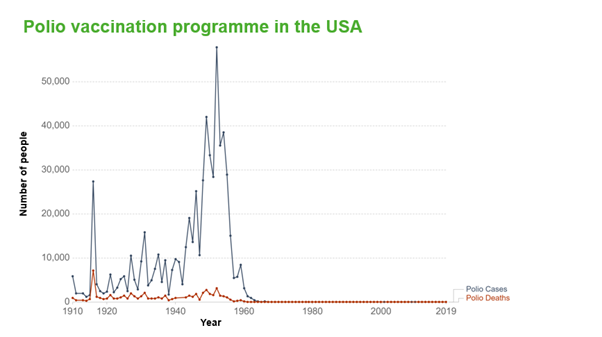What is a vaccine?
“A vaccine is a medicine which protects people from getting a disease. Vaccines are made from dead or inactive versions of viruses or bacteria.
Vaccines stimulate the body’s immune system to produce chemicals called antibodies which can prevent illness. Vaccines themselves cannot give you the disease.
A vaccinated person should be able to produce the correct antibodies very quickly and therefore fight the disease.” (Source Keep London Safe Campaign)
Where did vaccinations come from?
Vaccinations have been around for a very long time. They were first developed after a procedure used for protection against smallpox, the method involved giving people a mild dose of the disease to make them immune.
Lady Mary Wortley Montagu introduced variolation in England, having seen it first hand while living in Turkey. When she returned to London in 1762, she used her position and connections to campaign for variolation.
A little while late Edward Jenner, an English physician and scientist, discovered that contracting cowpox provided immunity against smallpox. He published his findings in 1796 and called the procedure ‘vaccination’ after the Latin word for cow ‘vacca’.
Vaccination soon became standard practice for preventing smallpox and, thanks to a global mass vaccination programme, the World Health Organisation officially declared smallpox eradicated in 1980.
The smallpox vaccine led to the development of many more life-saving vaccines, such as vaccinations for Diphtheria and Polio. (source Red Cross, The History of Vaccines, Mehzebin Adam)
Vaccines still remain the most effective way to prevent infectious diseases and they save millions of lives worldwide.
How do we eradicate a particular disease?
 Polio is an infectious disease caused by a virus that can be used to illustrate the eradication of a disease.
Polio is an infectious disease caused by a virus that can be used to illustrate the eradication of a disease.
“Polio used to be very common around the world. In some cases, the Polio virus attacked nerves in the spine and the base of the brain which could lead to paralysis of the legs.
The graph below shows the number of polio cases and polio deaths in the USA since 1910.
A mass vaccination programme was introduced in the late 1950s and early 1960s in the USA.
The programme reduced the number of cases from 35,000 in 1953 to 161 in 1961. Since 1979, no cases of polio have originated in USA.” (Keep London Safe Campaign)
Polio graph: https://ourworldindata.org/polio

